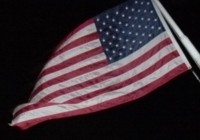Driving
I like hiring a car and driving. In my view it's the best way to quickly get a feel for a country. Interacting with other drivers provides its own insights and you notice the land forms: mountains; planes; hills; and dales as well as the land use and the natural vegetation first hand.
The whole trip encompassed twenty-two locations at which we spent one night or more, in a dozen States. It took just over six weeks involving six domestic flights for the longer legs; five car hires and many thousands of miles of driving: mostly on America's excellent National Highway System or State highways but sometimes on not so excellent local streets.
Driving to-and-fro around towns and cities to where people live to go shopping or visit a point of interest is a lot more informative about how people live than sitting in a tour bus; a train or even a cab where, in my experience, half the time is spent asleep and the other half gazing out a window, disengaged altogether from the ebb-and-flow of the traffic, navigation or even a decision to stop for a rest. Scanning from station to station on the car radio is another great source of local insight that many tourists don't experience. How many religious or 'country' stations can there be? Doesn't anyone listen to jazz or even classic rock in this region, let alone opera or a symphony?
I have quite a bit of previous experience driving in the US, most recently on the West Coast, and we had prepared for the obvious. We knew that the freeways, with numerous spaghetti-like interchanges, would be impossible to navigate without a GPS device. Old fashioned maps are no longer up to the task for us. Of course car hire companies generally offer GPS as an extra, often just enabling the one that comes with most recent cars, for a daily fee that can be close to the cost of the car rental and soon exceeds the cost of a separate device. Having experienced this elsewhere in the world and noticed it in the US when booking the cars on-line we dusted off our old TomTom but found it was out of date. So I invested in a new TomTom with a lifetime of world maps and an Australian female accent. Navigation errors, now very rare except for one quickly rectified incident in Navajo lands. Navigation no longer leads to threats of divorce and angry recriminations. We just blame TomTom and trust her to get us back on track.
Having spent the best part of six weeks on the other side of the road my main confusion was when I got back. I'm still forgetting which side my turn indicators are on on my own car and for a terrible moment I had to remind myself which side of the exit ramp to take leaving the supermarket car park at Spit Junction.

